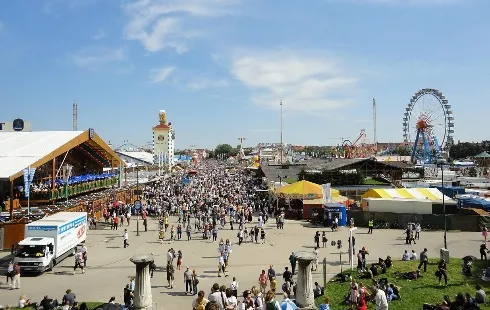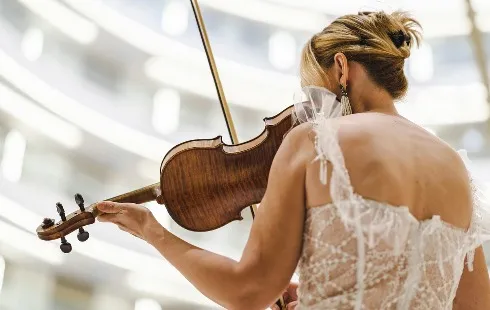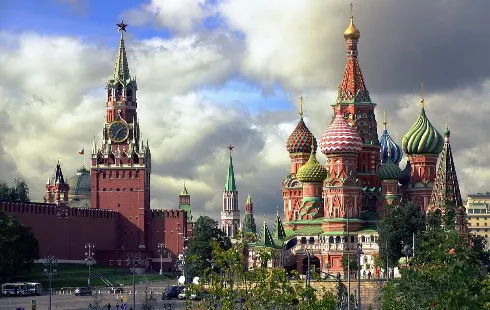
Revolutionising Websites for Cafés, Restaurants, and Bars Across Europe
Section: News
Giusy Caruso, the Italian pianist who visited Argentina in May, enthralled the audience with her performance in different stages.
On Saturday May 16, she gave a concert titled "Around midnight: when sound meets the silvery moon colour" at the Teatro Argentino at La Plata; and on Tuesday 19 she presented her CD "The mysticism of a romantic evil" consisting of seven religious works composed by Franz Liszt at the Auditorium D. Petriella of the Dante Alighieri Association of Buenos Aires.
Finally, she performed a repertoire of pieces of the twentieth century at the Experimental Center of the Teatro Colon, including pieces by Messiaen, Charpentier, Boulez and Crumb.
Histrionic, with a prodigious touch, the Italian artist excels in talent. Spirituality and brilliance coexist in her work: she can travel to the deepest corners; and she also allows herself the effective virtuosity.
Born in Cosenza (Calabria), she dominates an extraordinary technique coupled with a special ability to attract the audience's attention. Her graciousness expressed in her gestures and body movements are the characteristics that turn her into a hypnotic performer.
Giusy is also an artist researcher on musicology and piano performance practice. She combines the study of different disciplines, such as philosophy-she obtained a Master's Degree at the University of Calabria - Yoga and the study of eastern cultures, acting and dance.
Her work is characterized by transgressing the canons of classical music. She has designed and produced original performances; such as "George Sand recounts Chopin," a recital in which literature and piano are interwoven. In this performance, Giusy Caruso plays Chopin nocturnes and preludes while the actress Patrizia Gallo, recites letters and comments written by George Sand, a French writer who was once, Chopin's lover. This script -produced with a unique and extraordinary literary quality -expresses the intimate story of the Polish composer's life.
Affable in treatment and conversation, the Italian pianist was interviewed before leaving Buenos Aires.
Which authors were your influences from the beginning?
I started playing the piano when I was 10 years old. At that time, the composers who influenced me the most were Bach, Chopin, Mozart and Brahms (the latter, especially, his symphonies). I was particularly drawn to the work of Franz Liszt.
Do you follow a particular school of piano technique?
Throughout my career, different piano schools influenced over me in different ways. I followed Vicente Scaramuzza's School; Russian and French schools, as well. Japanese School also fascinates me.
Why you leaned towards contemporary music?
I like to propose programs guiding my audience along specific performance paths and aesthetical themes often by linking and combining different genres, historical periods and cultures.
Having been fascinated by this way of performing, I wanted to reach out to people to listen to music in a different way; I think that's the main reason I choose to enlarge my repertory to contemporary music.
Contemporary music requires the public to be proactive, critical and imaginative; as with contemporary visual arts.
Who are your favorite contemporary composers?
In recent years, I focused on the repertoire of certain French composers starting from Maurice Ravel to Olivier Messiaen, Pierre Boulez and Jacques Charpentier. I am also interested in the work of Italian composers Nino Rota, Giacinto Scelsi, Davide Anzaghi.
You also studied certain aspects of Eastern culture. Which disciplines helped you to improve your performance?
My preparation includes relaxation exercises; breathing; body expression; methods to strengthen the capacity of concentration. All of which is aimed at improving performance on stage. I complement these techniques with other techniques derived from Yoga.
Indian culture has inspired me as well. I started practicing Yoga when I was 19. I started on my own in a Yoga Center. At that time, I was student at the conservatory and I wanted to improve my concentration, my relaxation and my performance on stage. I think that it is very important for musicians to communicate with the public while demonstrating that you are relaxed, mainly through your posture and gestures.
Do you practice meditation?
Yes. It's very important. Through meditation, you can create your own world, and when you're on stage, you're in another world.
There are exercises that require you to concentrate on parts of your body for a long time. It is a mental and practical training, just like music. When you are on stage, you need to think about the music and communicate this to the public.
How relevant is piano technique for you?
I think piano technique and the study of body gestures is very important. I decided to focus on this matter starting a research work at IPEM (Institute for Psychoacoustics and Electronic Music) Department of musicology at Ghent University, Belgium, where I am conducting a doctorate in musicology and piano performance practice, My study combines science, philosophy of music and, overall, interpretation and piano practicing. The object of my research is to demonstrate how the embodied knowledge acquired from the study of Karnatic music (Indian music from the Southern region) influences my musical gestures and intentions. I will record my movements using the Mocap Technology, with the aim to describe my interpretations and expressive sensitivities in performing the 8th cycle of the "72 Etudes Karnatiques pour piano" by the French composer Jacques Charpentier.
As you said, you're doing a doctorate at the University of Ghent; and you also wrote a thesis on musical aesthetics at the University of Calabria. According to you, what is the relation between music and philosophy?
Literature and philosophy had a lot of influence over music; at the same time music has inspired writers and philosophers. For instance, German philosophy gave birth to my interest in linking music to philosophy. I think of music as the expression of a thought; as paint.
Now, as I said, I am also investigating the influences of the oriental cultures in the Western performance, focusing in particular on Karnatic music from South India.
You recorded a CD on Franz Liszt's religious compositions by the title, The mysticism of a diabolic romantic. The CD was awarded with the Golden Label by the Belgian music critiques of Klassiek-Centraal. Why did you choose that name for the album?
The title in itself paradoxical and intentionally provocative, was meant to underline the complementary duality in the complex personality, human and mystical, depressive and vital at the same time, of Liszt. He was a virtuoso pianist, and that seduced the public.
In 1861, after a crisis in his personal life, Liszt decided to dedicate his life to religion. In 1865 he received minor orders and became abbot (although he had been part of the Masonic logic). Liszt was full of contradictions. To Liszt, music is the essence of the universe; his work (especially after his admission to the monastery) is closely linked to religion.
For instance, Liszt dedicated a work to Saint Francis of Assisi; and another, to Saint Francis of Paola.
Yes. Liszt crafted two pieces full of symbolism, with different onomatopoeias inspired by two famous legends: "The birds' preach" and "Miracles in the crossing of the Strait of Messina".
In "St. Francois d'Assise: The prédication aux oiseaux", the use of one or two voices -at the most, suggests an intimate and essential religiosity. His musical language is poetic, and is expressed through harmonious trills and arpeggios while different colors emulate the singing of birds.
In "St. François de Paule, marchantsur les flots" he uses tremolos; diatonic and chromatic scales. These scales symbolize the waves, the temptation of Mephistopheles and the myth of Prometheus.
At the Teatro Colon, you performed a piece by Alberto Ginastera. What do you think of the Argentine composer?
I think his work is very attractive. In a very skillful way, it combines Argentine folk rhythms with modern compositional techniques. It has an energetic and exciting pace; at the same time, it is lyrical and creates an amazing atmosphere. I really like Ginastera.
What is your advice would for a child who is just beginning to study piano?
First, I would tell them to love music. I would also suggest them to get to know the background and context in which the piece was conceived.
The history and cultural traditions that influenced the composer are as important as the piece itself. If you do not understand this, we are losing the key to feel and to interpret music.
With the collaboration of Nicolas Rodríguez.

Section: News

Section: News

Section: News

Section: Arts

Section: News

Section: News

Section: News

Section: News

Section: News

Section: Health

Health Insurance in Germany is compulsory and sometimes complicated, not to mention expensive. As an expat, you are required to navigate this landscape within weeks of arriving, so check our FAQ on PKV. For our guide on resources and access to agents who can give you a competitive quote, try our PKV Cost comparison tool.

Germany is famous for its medical expertise and extensive number of hospitals and clinics. See this comprehensive directory of hospitals and clinics across the country, complete with links to their websites, addresses, contact info, and specializations/services.

Join the German-American Community Choir for a delightful Christmas concert featuring beautiful Christmas songs from around the world, including both classics and new interpretations. Embark on a musical journey to celebrate the festive season! This family-friendly concert will take place on Friday...
No comments yet. Be the first to comment!